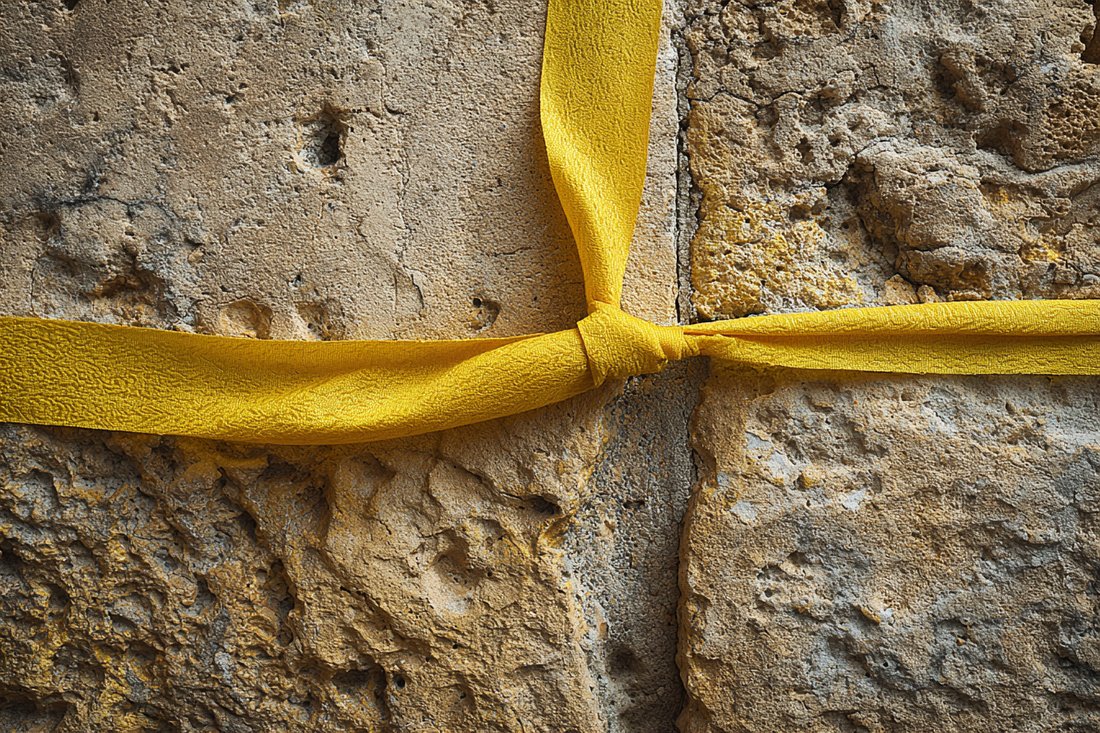
When Prayer Becomes Art: The Story Behind "Bring Them Home"
Share
There are moments when the world shifts beneath your feet. When history stops being something you read about and becomes something you live through. October 7, 2023 was one of those moments for the Jewish people. In the days and months that followed, we found ourselves grappling with questions that had no easy answers: How do we hold onto hope when the news cycle is relentless? How do we remember without drowning in despair? How do we keep showing up when showing up feels impossible?
Art has always been one of the ways we make sense of the senseless. From ancient texts to contemporary installations, we've used creative expression to process trauma, preserve memory, and insist on our continued existence.
The beauty of art is its ability to hold multiple truths at once, and our statement piece, "Bring Them Home", captures both the ache of absence and the warmth of what we're fighting to preserve. It acknowledges the difficulty of the moment while refusing to surrender to despair. In its imagery- children, light, a set table- there's an insistence on life, on connection, on the future we've continued to build even while navigating a difficult chapter.

The composition centers on two children standing before a painting of a Shabbat table, looking at it like a memory or a dream. The table glows with that familiar golden light—candles flickering, challah waiting, wine catching the glow. It's the image of home, of togetherness, of Friday night peace that every Jewish kid grows up with, whether your family is religious or secular, Israeli or diaspora. It's encoded in us. But here, the children aren't at the table. They're separated from it, yearning for it, reaching toward something just out of grasp.
On the wall behind them, spray-painted in raw, unpolished letters: "Bring Them Home." Three words that became a rallying cry, a hashtag, a prayer repeated in rallies and living rooms around the world. The graffiti-style lettering is intentional, creating a sense of urgency, like something scrawled in the middle of the night by someone who couldn't sleep. Because that's what it is. It's a scream, a plea, a demand that echoes through empty chairs and unanswered phone calls.
The visual language of the piece reflects this tension. There's the Shabbat table- glowing, warm, sacred- representing everything we want to protect and return to. And then there's the raw graffiti, the urban roughness of the text, representing the very modern, very real chaos we're living through. It's tradition meeting the streets. It's faith colliding with desperation. And somehow, both can be true at the same time. We can believe in the sanctity of Shabbat while spray-painting our anguish on walls.
The children in the piece are deliberately universal. They could be any Jewish kids. They could be the hostages themselves, dreaming of home. They could be children in Israel, growing up under the weight of this trauma. They could be Jewish kids in New York or London or wherever, watching from afar but feeling every tremor. The ambiguity is the point. It's about every Jewish person who suddenly felt less safe, less certain, less at home in the world.

The creative process behind art like this is never linear. Early sketches often feel too sad, too dark, too hopeless. But then something shifts. Because even in our darkest moments-especially in our darkest moments- we've never stopped setting the table. We've never stopped lighting candles. That's what resilience looks like for us. It's not pretending everything is fine. It's insisting on beauty and ritual and togetherness even when the world is falling apart.
Faith, for a lot of young Jews, isn't what it was for our grandparents. It's complicated, questioning, sometimes hanging on by a thread. But in moments like these, you realize that faith is sometimes just the refusal to give up. It's showing up to rallies. It's posting the names and faces. It's creating art that says "we won't forget." It's the insistence that these empty chairs matter, that these lives matter, that we will not let them be erased or ignored. That's faith too.
As we await the return of our hostages, our hope is that this beautiful piece transforms from one of longing into remembering. To serve as a reminder of our resilience and faith as a people who didn't stop crying and praying until every last person came home, and families were reunited once again.
